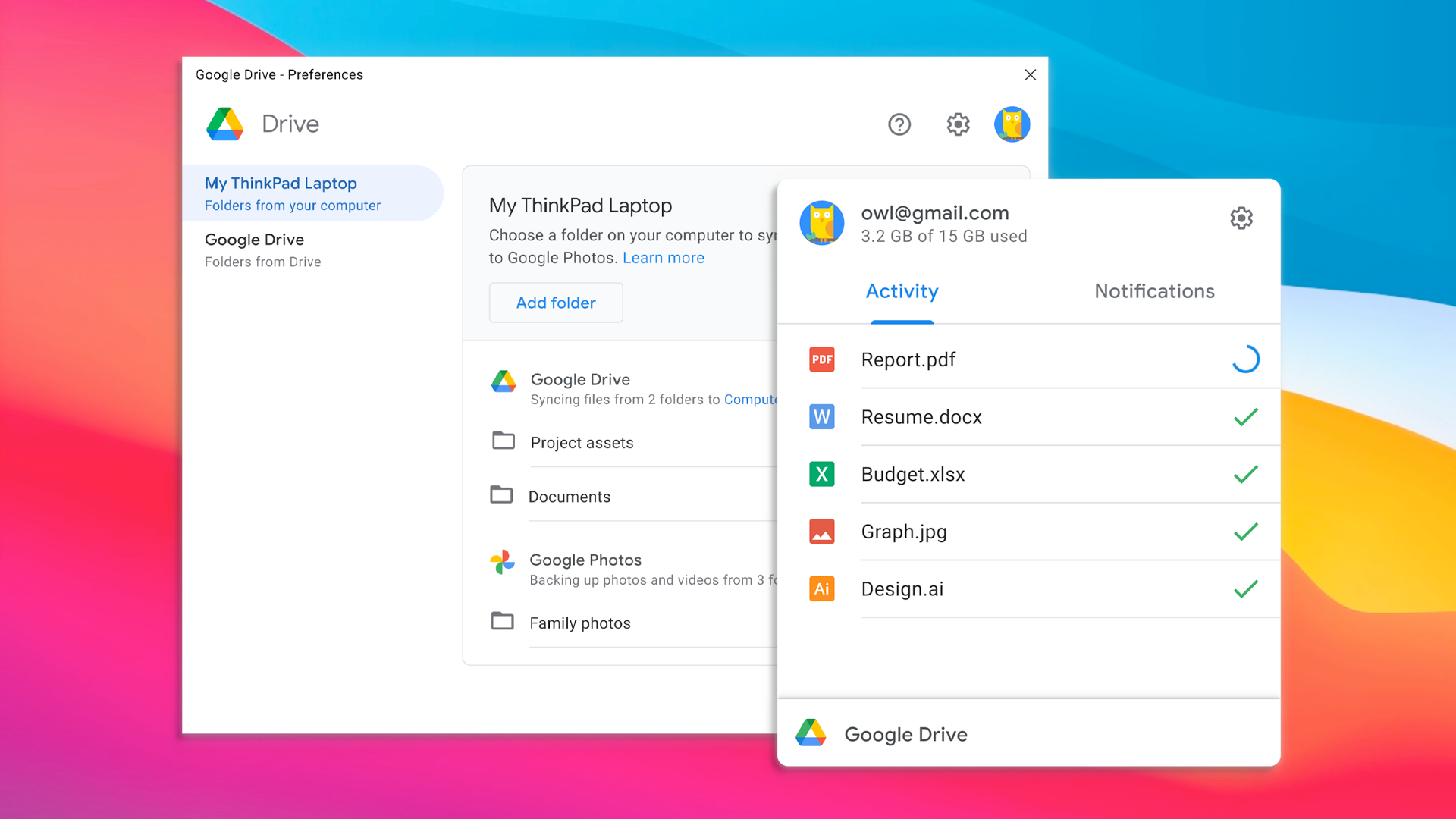For whatever reason, Google Drive has two different desktop apps. There's the consumer-level Backup and Sync, and of course, the enterprise-grade Drive for Desktop (formerly Drive File Stream). Google plans to merge these apps into a unified Drive for Desktop by the end of the year, and to kick things off, it's rolling out a major update that greatly improves the desktop app's usability and speed.
The most notable improvement may be multi-account support. In past versions of Drive for Desktop, users had to manually log in and out of each account they wanted to access. Version 49 of Drive for Desktop supports up to four accounts, which you can jump between by clicking your profile picture in the Drive for Desktop app.
But Drive for Desktop also sees some improvements in its basic functionality (that is, backing up and syncing files). You can choose select files or folders to automatically sync with Drive, and now, all photos backed up through Drive for Desktop will automatically go into your Google Photos account. (In the past, uploaded photos sat in Drive like any other files.) Of course, this comes just as Google is ending unlimited storage for its Photos service.
Interestingly, Google's Drive for Desktop now offers the ability to stream files from the cloud. Past versions required that you mirror media files before using them.
The final improvement to Google Drive is Windows and macOS compatibility. Google says that the client now works faster on both operating systems and is better at backing up files from the macOS iCloud and Photo Library. It's also better at backing up data from external drives.
Google is currently rolling out Version 49 of Drive for Desktop, though it may take a while to reach your computer. Starting in September, those who currently use Backup and Sync will be asked to transition to Drive for Desktop. Google will officially discontinue Backup and Sync this October, and if you don't switch over, automatic backup to Google Drive will stop working from your desktop.
Source: Google

